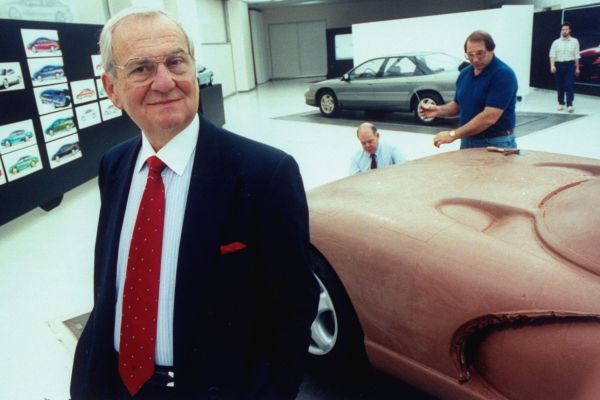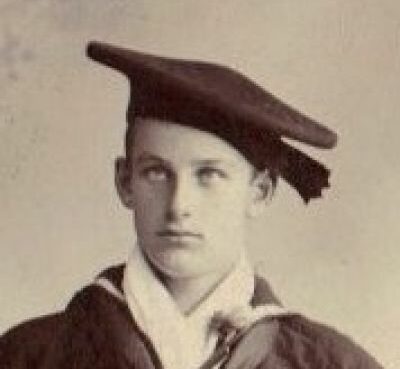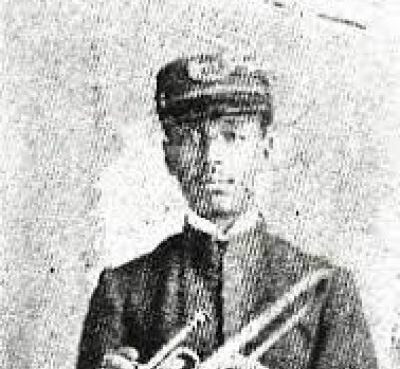Lee Iacocca, died on July 2, 2019, at the age of 94. One of the few CEOs to turn down a substantial salary for his job, the auto industry legend who famously saved Chrysler from bankruptcy was the only current leader to ever manage two of the Big Three auto manufacturers in the U.S.
However, at the time of his passing, Lee Iacocca’s estimated net worth was $100.0 million. Although his labor brought him great wealth, it is his contribution to the car industry’s transformation that will live on in history.
Yocco’s Hot Dogs is owned by the family of Lee Iacocca.
Page Contents
Lido Anthony “Lee” Iacocca was born on October 15, 1924, in Allentown, Pennsylvania. His parents immigrated to the country from San Marco, Italy, and settled in the region of the state known for its steel industry.
A tale has developed around the word “Lido,” which refers to a neighborhood in Venice. Iacocca, though, once emphasized that the rumors were untrue.
The renowned Pennsylvania restaurant business Yocco’s Hot Dogs, founded by Lee’s uncle, was owned and run by the Iacocca family.
Lee decided to pursue industrial engineering at Lehigh University rather than joining the family business. He later won the Wallace Memorial Fellowship and decided to pursue a dual degree at Princeton in politics and plastics.
Also Read: M. Shadows Married His Wife After A 6th Grade Romance
Ford Was Where Iacocca Started His Career
In 1946, the Princeton alumnus began working for Ford Motor Company as an engineer before transitioning to sales and marketing. He oversaw some of Ford’s biggest sales campaigns at the time, proving that he had always been a natural salesperson.
His most well-known marketing idea was the nationwide “56 for ’56” campaign for the 1956 model year cars. The campaign’s success aided his ascent through the ranks, and in the 1960s he was appointed vice president of many divisions.
Iacocca handled a variety of projects as a manager, including the creation of Ford’s most recognizable vehicles, the Mustang and the Pinto.
He eventually was made president of Ford but was sacked in 1978 following a dispute with Henry Ford II. Iacocca played a key role in the business’ $2.0 billion profit that year.
Iacocca prevented Chrysler from going under.
He didn’t stay unemployed for very long after leaving his longstanding workplace. When Chrysler was on the point of bankruptcy, they were courting the executive who made money.
Iacocca was immediately snapped up by Chrysler as soon as he was available. Rebuilding the sinking ship that was losing millions of dollars in North America was his first order of business. Additionally, he encouraged a move of Ford executives to Chrysler.
At Ford, Iacocca had pushed for various automotive designs that Henry Ford II had rejected. The “Mini-Max” design, which Ford had rejected, was brought to Chrysler by Hal Sperlich, who had been hired by Iacocca shortly after Sperlich had been fired from Ford.
Large-scale recalls of some vehicles had cost Chrysler money. But sales had increased under Iacocca’s direction.
Iacocca was aware that it was insufficient to make up for the losses, though. He requested a bailout from Congress to save the corporation.
He received a loan guarantee with some restrictions. In order to make room for new models that would go on to become Chrysler’s best-selling products for decades, some initiatives had to be shelved.
Chrysler was able to repay the government-backed loans earlier than anticipated because of the K-Car line’s and minivan’s commercial success.
Iacocca was given credit for Chrysler’s comeback. He served as the company’s spokesperson for its significant comeback marketing campaign because of this. His motto from the era, “If you can find a better car, purchase it,” has become famous.
Iacocca is infamous for drawing a $1 salary.
Iacocca left his position as chairman and CEO of Chrysler in 1992. However, he would garner attention when a hostile takeover attempt of the business in 1995 and Chrysler’s bankruptcy in 2009 both failed.
Iacocca invented the $1.00 CEO model, which many CEOs use today, during his time at Chrysler. He deliberately accepted a pay reduction in 1978, the year he started working for Chrysler, and received a base salary of $1.
When several CEOs decided to forgo bonuses during the war, the idea of a dollar salary was born. This happened in the early to mid-1900s. Later, when the businesses they worked for were experiencing a financial crisis, several executives would receive paychecks of just $1.
The people who hold the corner offices effectively forgo direct pay for work. However, in order to legally distinguish between an employee and a volunteer, pay must be greater than zero.
One of the various cost-cutting strategies Iacocca used to obtain federal financing was his tiny wage. Where CEO wages were based on results, it was a sign of confidence.
In William Novak’s Iacocca, the history of his pay is as follows: An autobiography inspired other top executives to forgo substantial salaries for the prosperity of their organizations.
Famous one-dollar salary individuals include the late Steve Jobs, Larry Page, Larry Ellison, Mitt Romney, Arnold Schwarzenegger, and even President Trump.
CEOs, however, rarely suffer as a result of this significant compromise. Typically, benefits like stock options more than makeup for the meager income.
Iacocca was also paid, so it’s not like that either. He received an estimated $11.499 million in total remuneration during his tenure as Chrysler’s CEO in 1986, making him the highest-paid CEO in the country at the time.
Here is how he fared against other influential car industry CEOs.
| Executive | Net Worth |
| William Clay Ford, Jr. | $1.0 billion |
| Lee Iacocca | $100.0 million |
| Carlos Ghosn | $100.0 million |
| Sergio Marchionne | $80.0 million |
| Mary T. Barra | $63.0 million |
Lee Iacocca Owned Residences in Florida, California, and Michigan
The native of Pennsylvania worked his entire career in Michigan’s auto industry. In Grosse Pointe Farms, he formerly resided in a Georgian-style house that belonged to Henry Ford II, his old employer. The home was estimated to be worth between $800,000 and $1.5 million.
He was the father of two girls, Lia and Kathryn, and had been married and divorced three times. After he retired, his third wife, Darrien, who was from California, demanded they move back there.
So, shortly after Lee retired from Chrysler in 1993, it is said that Lee and Darrien spent $4.25 million on a house on L.A.’s Westside. After moving to California not long, he got divorced a third time.
In addition, Lee had residences in Detroit, Aspen, Indian Wells, and Tuscany, Italy. His Italian home was connected to an olive grove with 5,000 trees. His vineyard produced olive oil that was sold in the United States.
In 1990, the same year he put it up for sale, he also owned an oceanfront penthouse in Boca Raton, Florida, which was valued at $995,000. Peggy Johnson, his second wife, was then a resident of Miami.
In 1987, Lee reportedly paid $1.1 million for a penthouse in West Palm Beach’s Trump Plaza. He reportedly never resided there, though. When Donald Trump, a still-active real estate magnate, was experiencing financial setbacks, he sold the penthouse.
But he resided in the Bel Air estate he had purchased more than twenty years before for the remainder of his golden years. According to his daughter Lia, he passed away at home from complications related to Parkinson’s disease.
Also Read: Tantoo Cardinal’s Wife, Kids, And Family





